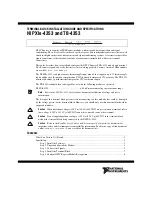
All information and data contained in this document are the exclusive property of SKIPLY SAS and may neither be used nor disclosed
without its prior written consent.
~ 21 ~
15. Settings description
15.1.
Duty Cycle
The duty cycle of radio devices is often regulated by government. If this is the case, the duty cycle is
commonly set to 1%, but make sure to check the regulations of your local government. In Europe, duty
cycles are regulated by section 7.2.3 of the ETSI EN300.220 standard. For more details about the Duty
Cycle, please refer to the ETSI EN300.220 standard.
Smilio S can self-manage the radio emissions according to the authorized duty cycle. By default, and to
respect the European recommendations, the Duty Cycle is activated in Smilio S. User can choose to
activate or disactivate the Duty Cycle. Despite this, we do not recommend disactivating the duty cycle.
15.2.
ADR (Adaptative Data Rate) - Useable only with LoRaWAN
Adaptive Data Rate (ADR) is a mechanism for optimizing data rates, airtime and energy consumption in
the LoRaWAN network. If ADR is enabled, the LoRaWAN networks are able to manage the Smilio S
’s
data rate. ADR should be enabled whenever an end device has sufficiently stable RF conditions. This
means that it can generally be enabled for static devices. If radio conditions are unstable (mobile end
devices for example), ADR should be disabled.
15.1.
Force DR0 at join procedure - Useable only with LoRaWAN
If « Force DR0 » parameter is enabled, Smilio S force the data rate to the most robust during the join
procedure (DR0=SF12BW125). In difficult environments such as a low SNR, a low signal area, or if DR0
is enabled, the join procedure will be shorter and more efficient.
If ADR is disabled, Smilio S stays with the same data rate: (DR0=SF12BW125).
15.2.
Backoff parameters - Useable only with LoRaWAN
Only valid for LoRaWAN acknowledged mode and for a current datarate greater than the DR0 (DR0 =
SF12BW125) like SF7, SF8, etc.
The Smilio S sends the N requested transmissions with the current datarate. If no acknowledge received
and backoff enabled, the Smilio S decreases the current datarate, that means increases the SF, and
retries 2 transmissions. If no acknowledge is received, Smilio S decreases again the current datarate
and retries 2 new transmissions. And so on, until the Smilio S receives the acknowledge or has reached
the SF12BW125.













































